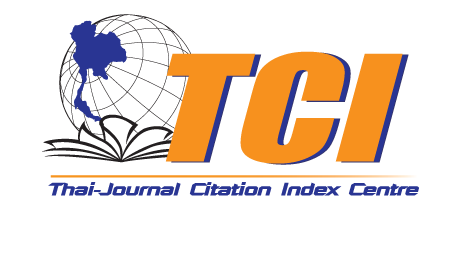DEVELOPMENT OF HYPERTENSION PREVENTION AND CONTROL MODEL AMONG MONKS IN NONG KHAI PROVINCE, THAILAND
Keywords:
Buddhist Monk, Hypertension Prevention & Control, Evaluation Model, Nong Khai ProvinceAbstract
Background and Objectives: Nong Khai Province implemented a health promotion project among monks in 2016. The objective was to ensure monks maintain good health, enabling them to continue preserving and promoting Buddhism and to serve as health role models within their communities. The project included 11 activities. This research aimed to develop the hypertension prevention and control model and evaluate the hypertension prevention and control model among monks in Nong Khai Province using the CIPPIEST Model. This model was an extension of the CIPP evaluation model (Context, Input, Process, and Product) by expanding the Product Evaluation into Impact Evaluation, Effectiveness Evaluation, Sustainability Evaluation, and Transportability Evaluation of the evaluated projects.
Methodology: This research and development approach to hypertension prevention and control among monks in Nong Khai had two parts: Part 1: Development of a hypertension prevention and control model; and Part 2: Evaluation of a hypertension prevention and control model among monks in Nong Khai Province.
Main Results: This research found two parts: Part 1: This section involved the development of
a hypertension prevention and control model, which comprises six components: Belly reduction, blood sugar control, medication, blood pressure measurement, health literacy, and protection and rest. By addressing ten success factors, the model can be effectively implemented and sustained, contributing to the control of hypertension among monks; and Part 2: This part evaluated the hypertension prevention and control model using the CIPPIEST model. The summary of the sample group's opinion on the project components revealed that Input Factors, Impact, and Transferability were rated at a very good level, while Context, Process, Productivity, and Effectiveness were rated at a good level. These findings indicate a generally favorable perception of the model among the sample group across various evaluated components. The model serves as a comprehensive framework for promoting and maintaining the health and well-being of monks. This approach underscores a commitment to addressing the multifaceted health challenges faced by monks in the region. By aligning strategies with identified success factors, stakeholders can ensure the effective implementation and sustainability of health promotion initiatives aimed at controlling hypertension among monks.
Involvement to Buddhadhamma: This investigation revealed the application of Buddhism in relation to Buddhist innovations for the achievement of "Healthy Monks," it can be applied to the implementation of activities for Bhavana 4 (Kayabhavana) about prevention and control of high blood pressure among monks, consisting of 6 components, 20 activities, and 10 success factors for this model were identified. These factors include clarity of policy, sector collaboration, mutual understanding, integration of operations, administrator emphasizing, network and coordination, monitoring and evaluation, continuity in operation, faith, and confidence in merit in compliance with the National Sangha Health Charter 2017.
Conclusions: This research highlighted the significance of comprehensive and culturally sensitive health promotion strategies for monks grounded in collaboration, community participation, and adherence to ethical principles. By aligning with these factors, health promotion efforts effectively addressed the unique health needs of monks in Nong Khai Province while respecting their beliefs and lifestyles. Overall, the evaluation indicated that the prevention and control of hypertension model among monks was well-received and made significant strides in improving monk health and well-being. Continued monitoring, support, and community engagement were essential
for sustaining and enhancing the project's impact over time. In summary, the evaluation underscored the commendable success of the prevention and control of hypertension model. Continued vigilance, support, and community involvement were pivotal in upholding and augmenting the project's impact over time.
References
Buathet, D. (2012). Public Policy: Development of a holistic monk health care model by participation of communities in the responsibility area of the Office of Disease Prevention and Control 2, Saraburi Province. [Unpublished research report]. The Office of Disease Prevention and Control 2 Saraburi Province. Saraburi, Thailand.
Chachawarat, P. & Piromruen, S. (2014). The pattern of promoting health behaviors of monks. Kasalong Kham Research Journal, 8(1), 167-178.
Ekthamasut, N. & Jarearnsrimuang, S. (2021). Applying the CIPP test evaluation model to evaluate health projects. Journal of Boromarajonani College of Nursing, Surin, 11(2), 138-148.
Hsieh, F, Y., Daniel, A, B. & Michael, D, L. (1998). A simple method of sample size for linear and logistic regression. Statistics in Medicine, 17(14), 1623-1634.
Liamthong, S., Norchan, J., Korsaeng, C. & Siriphan, S. (2016). Evaluating the Buddhist nursing project to promote self-sufficient health care of the elderly with high blood pressure Village No. 2, Ban Sarawan, Mai Kaen District Pattani Province. Princess of Naradhiwas University Journal, 3(2), 58-72.
National Health Commission Office. (2017). National Monks Health Statute, B.E. 2017. Nonthaburi, Thailand: O.S. Printing House.
National Statistical Office. (2023). Statistics on personnel and religious places in Thailand: Statistics of 21 branches in Thailand. Bangkok, Thailand: National Statistical Office of Thailand.
Nong Khai Provincial Health Office. (2017). Report on the implementation of the health check project for monks and novices to support and promote the village to preserve the five precepts. Nong Khai, Thailand: Health Promotion Group.
Phra Kittianyametee (Somkiat Ramanwongand), Subruangthong, W. & Sooksamran, S. (2018). Promoting holistic health care of monks in Lopburi province. Rajapark Journal, 12(25), 94-106.
Phra Thamma Kittiwongthongdee Surtecho Ratchanee. (2005). Dictionary for the study of Buddhist temples. Bangkok, Thailand: Raja Oorasom Temple.
Phrakhru Suwattanapattanabandit, Daenghran, T. & Vapuchavitee, S. (2014). Development of a holistic health care model of monks in Khon Kaen province with an emphasis on network participation. Journal of the office of DPC 7 Khon Kaen, 22(2), 117-130.
Rodchanaarcha, R. (2016). Evaluation Project for Routine to Research (R2R) Implementation among Personnel in Sadao Hospital, Songkhla Province. The Southern College Network Journal of Nursing and Public Health, 3(2), 133-148.
Sararak, M. (2017). Prevalence and factors associated with chronic illness of monks Warinchamrab Ubon Ratchathani. Journal of Science and Technology Ubon Ratchathani University, 19(1), 37-48.
Stufflebeam, D. L. & Shinkfield, A. J. (2007). Evaluation Theory, Models, and Applications. Sanfrancisco, United States of America: An Imprint of Wiley.
Stufflebeam, D. L. (2022). CIPP evaluation model checklist: A tool the CIPP model to assess projects and programs (1st ed.). Michigan, United States of America: Western Michigan University.
Upra, R. & Chatcharat T. (2016). Chronic diseases: Effects on health, monks, and guidelines for health promotion. Journal of Nursing, Public Health, and Education, 17(3), 17-23.
Yaemlamai, N. & Hongwiset, S. (2014). Evaluation of the health promotion project for the elderly. Takhian Tia Subdistrict Municipality, Bang Lamung District Chonburi Province. Nakhon Phanom University Journal, 8(3), 17-25.

Downloads
Published
How to Cite
Issue
Section
License
Copyright (c) 2025 Journal of Buddhist Anthropology

This work is licensed under a Creative Commons Attribution-NonCommercial-NoDerivatives 4.0 International License.







